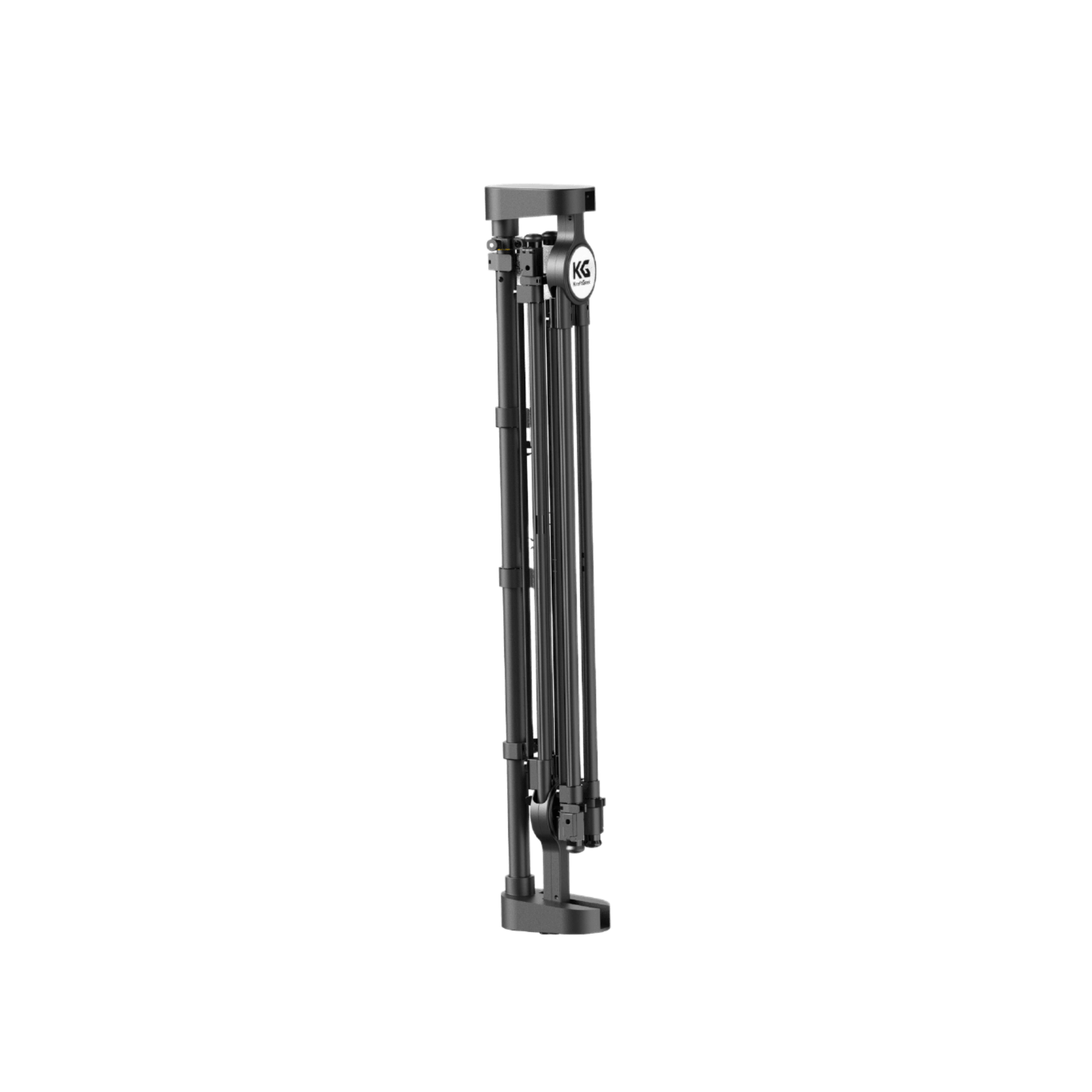It is social media influencers, known as trendsetters or thought leaders that can be looked upon for products and services to capture the attention of varied people. From a promising influencer who can connect with an audience using their smartphone and solid phone tripod to the content creator showcasing a top-notch camera tripod, this potential is within reach.
Their influence ranges from tech lovers demonstrating their own homemade gadgets to fashionistas' collage outfit ideas on a budget. This article is a comprehensive guide to becoming an influencer where you will need a strategic mix of originality, imagination, and in-depth knowledge about your niche.
Influencer Definition & Impact
An influencer is a content creator and thought leader who has much influence over their audience’s opinion or behavior. These people, commonly known as social media influencers broadcast their wisdom through different platforms to engage with followers.
Social media influencer is not constrained by the ordinary limits of advertising and instead develop a deeper, more direct bond with an audience. Social media influencers are trendsetters because they create relevant content including lifestyle and fashion items, tech gadgets DIY projects. Such content is not only promotional but often has the feature of ‘edu-tainment’ combining educational value with an entertaining presentation.
The influence of social media influencers on purchase decision-making is worth mentioning. Being powerful in their respective niches, influencers have the power to change consumer decisions with honest reviews, product demonstrations, and individually tailored experiences. Their suggestions are taken seriously contributing to the sales of their well-attached and steadfast followers.
Types Of Influencers
The classification of influencers into categories such as nano, micro, mid-tier macro and mega helps understand how people create content online.
Nano-Influencers (1,000-10,000 followers)
The defining characteristic of nano influencers is a small follower base that is highly engaged. Nano influencers have a small yet loyal fan base and they tend to specialize in niche interests thereby increasing the closeness of connection. These people equipped with barely more than a smartphone and possibly a convenient phone tripod make relatable content that is very close to what their followers can relate to.
Micro-Influencers (10,000-50,000 followers)
Micro-influencers take a step into a slightly larger space, providing more reach together while preserving the intimate touch to their audience. Usually specialists in a certain discipline, they use equipment such as an iPhone tripod that raises the level of their content. The power of micro-influencers is in their capacity to reconcile relatability and expertise.
Mid-Tier Influencers (50,000-500,000 followers)
As influencers ascend into the mid-tier category, their reach expands significantly. Wielding professional-level gear such as a camera tripod for stunning imagery, mid-tier influencers can explore various forms of content creation. They are sought-after collaborators by brands that seek to target specific audiences.
Macro-Influencers (500,000-1,000,000 followers)
Macro influencers are individuals with large online followings, sometimes even reaching hundreds of thousands. With access to advanced production tools, including professional camera tripods, macro influencers produce polished content across multiple platforms.
Mega Influencers (Over 1,000,000 followers)
Mega influencers are associated with celebrities who have more than one million followers. Their influence is worldwide and their partnerships with brands have great prominence. Mega influencers create trends and consumer patterns on a grand scale.
Why Become An Influencer?
Posing as an expert in a specific niche is one of the main motives for joining influencer ranks. Influencers can become trusted voices in the event that they share consistent, worthwhile insights, niche-specific knowledge, and experience. This authority not only enhances personal branding but also attracts collaborations with brands seeking credible and knowledgeable partners.
Here are other reasons why you should consider being an influencer:
- Generate interest in social media users and brands that want to engage with their audiences.
- Turn your influence into a cash flow by marketing products and services through connections.
- Work with brands to launch influencer marketing campaigns.
- Create content that will allow you to reveal their personality and be creative.
- Develop abilities in content creation, communication, and digital marketing.
- Use mediums to discuss opinions, share experiences and engage with similar individuals.
- Attend virtual and physical events to meet influencers within your niche.
- Partner with other influencers in order to increase your audience and improve networking.
How To Find Your Niche
This step is not just about identifying a popular trend but rather discovering a passion that resonates with both yourself and a potential audience. Aspiring influencers equipped with nothing more than a smartphone and a convenient phone tripod can use this process to carve out a unique space within the social media.
1. Determine Your Passion
In order to identify your niche, begin by thinking about interests and passions that inspire you. Think of the subjects or activities that interest you, inspire your curiosity, or spark a creative reaction. Irrespective of whether it is tech gadgets, fashion, or DIY projects your choice should be in accordance with what you are genuinely interested in so that authenticity can prevail and keep motivating you to continue as an influencer.
2. Identify Your Target Audience
Think about who your ideal customer should be, what their wants are and needs in addition to the challenges that they face. By developing a buyer persona, you can gain valuable information on the interests of your potential audience.
3. Carve Out a Unique Space
This brings you to the next step, which is determining a unique place within your field of choice after developing a passion and identifying your target audience. This includes separating yourself from other competitors within the same niche. For example, if your interest lies in tech, you might narrow it down to smartphone accessories and, more specifically, explore the creative use of a camera tripod or an iPhone tripod.
How To Choose The Right Platform
With the different demographics and design of content for each platform, making a choice on which one to use is key in targeting your audience better.
Evaluate Popular Social Media Platforms
- Instagram -A visual-oriented platform suitable for lifestyle, fashion, and visual content. Instagram has various features such as IGTV for long videos and Reels to help create short-form engaging content.
- TikTok -A popular platform among the young generation, TikTok has become famous for its short and vibrant clips. This is a lively space for creative and entertaining content which means that it suits well with influencers who are good at compelling storytelling.
- YouTube -A video-centric platform offering a wide array of content possibilities. YouTube is perfect for detailed tutorials, reviews, and lengthy content. It caters to a wide variety of niches with an equally large range in the target audience.
- Pinterest -A visual discovery platform, Pinterest is excellent for influencers in the lifestyle, home decor, and DIY niches. It emphasizes visually appealing content and is driven by users seeking inspiration.
- Twitter -A real-time engagement platform focused on text. Suitable for influencers who can communicate their message clearly and want to engage in existing conversations.
Align with Your Target Audience
Take into account your target population and their interests. Define the age, interests, and online habits of your target audience. If your content targets tech enthusiasts or creatives, then YouTube and TikTok may prove a perfect fit.
Choose Your Content Format
Think about the nature of the content that you intend to produce. If you are highlighting visual aspects, Instagram or Pinterest might fit. For in-depth tutorials or reviews, YouTube is a strong contender.
Explore Platform Features
Explore the features each platform offers. For instance, the Instagram stories or TikTok duet feature. Select the platform that corresponds to your content style.
Crafting A Content Strategy
Developing a Balanced Approach
Cultivate a wide array of content that encompasses various dimensions within your niche. Try out different types of content such as images, videos, and written posts. Each format serves different audience preferences, providing a well-rounded experience for your followers.
Diversity is important but uniform themes across your niche ensure a distinctive and coherent brand image. No matter what you’re trying to showcase – tech gadgets, fashion, or DIY stuff; make sure that your themes match the expectations of those who are watching.
The 5-3-2 Principle
- Curated Content (5):Share content from external sources that align with your niche and resonate with your audience. This demonstrates your knowledge of industry trends and fosters a sense of community by showcasing content beyond your own.
- Created Content (3):Focus on creating original content that directly addresses your audience's interests. Whether it's demonstrating the versatility of a phone tripod or providing in-depth tutorials with a vlogging tripod, your created content establishes your expertise and unique perspective.
- Personal Content (2):Inject a personal touch into your content strategy. Give insights into your life as well as some behind-the scenes moments and stories to make you human in the online persona. This builds a more authentic connection with your audience.
Optimizing for Platforms
Make sure to adapt your content strategy in accordance with the features and peculiarities of every platform that you use. For example, Instagram Stories is perfect for short updates while YouTube enables you to create long-form content.
Investing in Quality
When producing content that requires phone tripods, iPhone tripods, or vlogging tripods, invest in quality equipment. Visual clarity and audio quality complement a more holistic viewer experience that would lead to improved interactivity and credibility. Frequently update by trying out different formats and adjusting your strategy as per the changing tastes of the audience.
Audience Interaction
Actively encourage comments, shares, and discussions. Respond promptly to audience queries and comments, fostering a sense of community around your content. Listen to the audience and apply positive feedback on your content strategy. Not only does this increase the value you offer but it also demonstrates your commitment to exceeding audience expectations.
Distributing Your Content
Leverage unique features provided by each platform. Examples include hashtags on Instagram, TikTok trends, and Twitter chats. These strategies pertaining to platforms increase the discoverability of your content.
Research and understand the peak activity times of your target audience on different platforms. Schedule your content distribution during these times to maximize visibility. Maintain a consistent posting schedule across platforms. This not only helps in establishing a routine for your audience but also aligns with algorithms that favor regular activity.
Share teasers or snippets of content on one platform that lead to the full content on another. This cross-promotion strategy drives traffic across your various social media channels.
Networking with Fellow Influencers
When influencers collaborate, their followers often discover new content creators. This brings your profile to a side that might have similar interests, widening the frame of followers in an organic manner.
Search for influencers whose content falls in line with your niche and captivates the attention of your target audience. Shared interests build a smooth connection where influencers work together with an emphasis placed on building relationships between themselves and their audiences. Initiate contact through direct messages on platforms like Instagram or Twitter.
When reaching out to fellow influencers, express genuine interest in their content. Your authenticity as an approach builds the trust that helps to establish strong partnerships. Get involved in social media conversations, such as virtual events and relevant discussion forums on the Internet.
Product Recommendations:
Conclusion
It is not as simple to become a great influencer as it does depends on the tool used but comes down to one’s genuine nature and persistence through their journey. Starting either with a simple phone tripod or going further on your journey of exploring the vlogging tripod, influence stays true to you being yourself while adopting change and creating positive connections.









